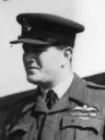The Fellowship of the Bellows
Funding Through Fun ~ by British Expats
The idea of collecting ‘Funds through Fun’ for assisting the War Effort was conceived at a meeting of 4 members of the British/Anglo-Argentine Community in a Buenos Aires Bar. The RAF was chosen as the Beneficiary because at that time almost all the volunteers from Argentina had enrolled in the RAF; with Losses already having been suffered it was an emotive matter in the Local Community.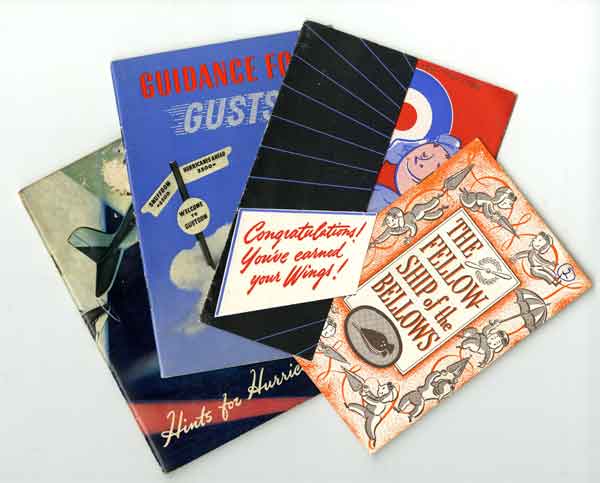
Over 600 Argentine Volunteers served with both the RAF and the RCAF, mostly in the 164 Argentine-British RAF Squadron, whose shield bore the Sun from the Flag of Argentina and the motto, “Determined We Fly” (Firmes Volamos)
The Hurlingham Club of Argentina is a famous Golf & Polo Club in Hurlingham, Buenos Aires Province. It is named after the Hurlingham Club in London and was set up in 1888 by the local Anglo-Argentine Community. The Town of Hurlingham & Hurlingham Partido grew up around the Club, taking its name. The Club covers 73 hectares and has an 18-hole Golf Course, 5 Polo Fields, Stables for 300 horses, Schools of Polo, horse riding & pony riding, 18 Tennis Courts including 6 Grass Courts, a Cricket Pitch, 2 Swimming Pools, 3 Paddle Tennis Courts and an indoor complex with a Gym, Squash Court & Dressing Rooms. The Clubhouse also had elegant Function Rooms, Restaurant & Bars, plus Hotel Rooms available to Members. Hurlingham was the 1st place in Argentina where Polo was played and the Argentine Polo Association was founded at the Club in 1922. Argentina has subsequently become a dominant power in International Polo and the Club hosts a major Polo Tournament each year, the Campeonato Abierto de Hurlingham.
The English Club Avenida 25 de Mayo in downtown Buenos Aries with its wood-panelled rooms and the fusty atmosphere was a reminder of Britain’s once-strong links with the South American Country. Now the Club has closed, the Library & Billiard Room have been rented to a University and Argentine Students swot where British Ancients once dozed away the hot Buenos Aires afternoons. To the dismay of the 10,000-strong English Community – what is left of the 56,000 Expatriate Britons of the 1940s.
Within a short time, they publicised the concept and called an open meeting at the ‘English Club’ in Buenos Aires on 14th October 1940 and the ideas were outlined from behind a curtain in order to preserve their anonymity. The meeting appointed them as a Committee of ‘Servants’, and the ‘Fellowship of the Bellows’ (for More Air Force) took off.
The ‘Servants’ consisted of the High Wind (what he says blows), who gathered around him:
Secretaries – The Whirlwinds (always in a flap);
Cashier – Receiver of Windfalls;
Treasurer – Keeper of the Windbag;
Lady Member – The Windlass (very easy on the air).
The concept spread and from the start employed British humour, advertising copy-writing skills, with plays on words (puns). The pressing need at that time was for More Air Force, so clearly Bellows were needed to increase the Air Force; 1,000s of Bellows to Raise The Wind.
The Funds raised were sent to the Ministry of Aircraft Production. The initiative proved to be outstandingly successful and within a very short time many other Countries including Brazil set up their own similar ‘Fellowships’. The rules they devised were –
(a) the Servants must remain anonymous;
(b) various levels of ‘Fellow’ were created, and promotion was based on payment of one’s selected contribution multiplied by the number of confirmed Enemy Aircraft destroyed during the previous month, as published by the UK Air Ministry;
(c) the appeal must be within the reach of everyone, with a joining fee of 1 Argentine Peso (then about £1/16th), and each ‘fellow’ setting their own level of pledged contribution, with a minimum of 1 cent (about £1/1600th) – Office Boy & Boss would, therefore, progress at the same speed, having paid up their selected rate of contribution for each Plane destroyed;
(d) anyone missing a monthly payment (‘Blow in’) could make up their arrears when they had the funds to do so, and promotion would then be achieved;
(e) it must be couched in a humorous vein (‘Funds through Fun’).
Enrolment was effected by payment of the joining fee at which point one ceased being a ‘Snuff’ (‘infinitely worse than being a cross-eyed toad with athletes foot’) and became a Fellow with the rank of Puff (Soplito) and given a badge of a particular colour, depicting a Bellows, to wear in his buttonhole or brooch on her blouse. The Fellow then paid his pledged amount for each enemy ‘plane brought down during the month. Setting the minimum so low was a masterstroke, which would enable much more potential ‘Snuffs’ to become Fellows.
Upon joining one was issued with an Official Booklet which contained: one’s name and Fellowship Number for accounting purposes; information on how the Fellowship worked; how to make the salute for greeting ‘Fellow Bellows’ (upward spiral motion of 1st finger of right hand depicting an eddy of wind); Tear-out Slips for handing in with contributions so that it could be recorded by the Servants (receipts were given); a Chart on the back page for monitoring one’s own progress towards promotion.
The Fellows were encouraged to continue to contribute because after 1,000 Planes had been certified by the Air Ministry and paid for, the Fellow was promoted from Puff (Soplito) to Gust (Rafaga) and given another distinctive Badge. Thus the quest for Funds through Fun went on; with 2,500 Planes down and paid for, the Gust became a Gale (Vendaval); 5,000 Planes created a Hurricane (Huracan), 6,500 a Tornado and 8,000 a Typhoon (Tifon). With each promotion, a further distinctive Badge was issued. 10,000 ‘Planes downed and paid for entitled Fellows to obtain the Honour: The Order of the Bellows and were given their Wings; wings were added to a special Badge depicting a Bellows. It was a further masterstroke that the incentive of promotion encouraged continuing monthly payments. The Fellowship of the Bellows spread with such enthusiasm and speed that the Initial Target of £100,000 was reached and submitted to the Air Ministry, so the Servants of the Bellows quickly created new and still more exalted Ranks of promotion at each additional 2,000 ‘Plane mark, each with its Winged Badge, in order to keep up the momentum (Airspeed).

Badges of the Fellowship of the Bellows:- from publicity booklet in Spanish. On 30 December 1940 Time Magazine published an article entitled ‘Whiffs, Puffs & Snuffs’ relating to the Fellowship. The Servants were horrified that their names were “leaked” in the Article, obliging them thereafter to categorically deny their involvement, in accordance with their principle of anonymity.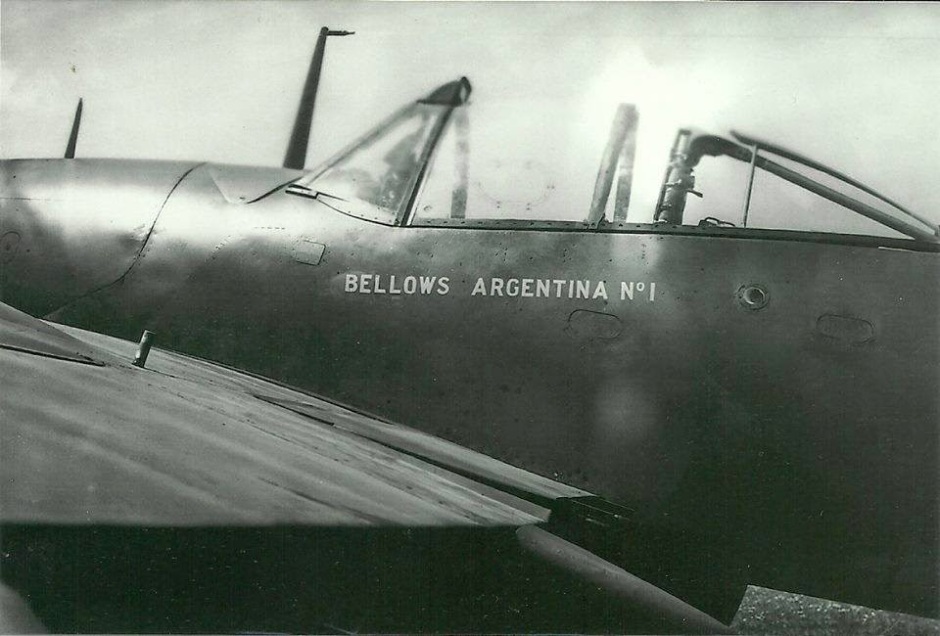
The 1st Bellows plane took to the Air labelled Bellows Argentina No.1 in March 1941 after only 4½ months. 28th of June 1941 she was delivered to 39MU at Colerne. On the 16th of the following month she moved to the Starveall Farm disposal, on the 20th of September she joined 263 Squadron at Charmy Down, 6 days later she was moved to 137 Squadron who were also at the same Airfield. On the 7th of January 1942, she suffered an accident at Coltishall in which her Pilot Jack Maddocks was injured. She was then sent to Westlands for repair afterwards she went to 18 MU (Maintenance Unit) at Dumfries and on the 18th of July 1942 she joined 263 Squadron at Anglesey and P7062 carried L-HE code. In February 1943 she crashed near Chisledon, Wiltshire. Her Pilot Frank Hicks was killed.
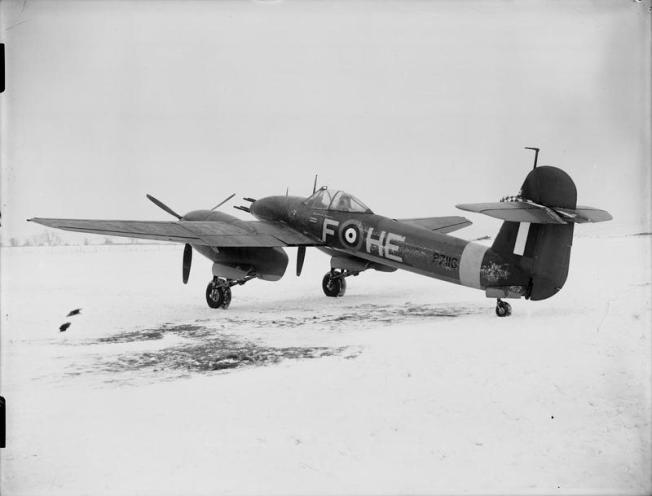 ‘Plane after ‘plane was added, and in July 1942, 263 Squadron took delivery of 20 Westland Whirlwind Fighters and the Squadron adopted the nickname “Fellowship of the Bellows”.
‘Plane after ‘plane was added, and in July 1942, 263 Squadron took delivery of 20 Westland Whirlwind Fighters and the Squadron adopted the nickname “Fellowship of the Bellows”.
Whirlwind Mark I, P7116 HE-F Bellows Argentina No. 2, flown by the Officer Commanding 263 Squadron RAF Based at Colerne, Wiltshire, on the snow-covered Airfield at Charmy Down, Somerset. The Westland Whirlwind was the 1st cannon-armed Fighter for the RAF, 1st flown in October 1938 and at the production Stage by 1940. It was a Twin-Engined Heavy Fighter (also able to function as a Fighter-Bomber with 500-lb (230 kg) Bombload). With 4 x 20mm Hispano cannon in the Nose, it was more powerful than an 8-gunned Fighter like the Spitfire or Hurricane. It was Fast, matching the current Spitfire’s maximum speed but performed best at low Altitude and was used for Convoy Escort and against Small Targets in the Channel and Northern France. Only 114 were produced (compared with over 20,000 Spitfires).
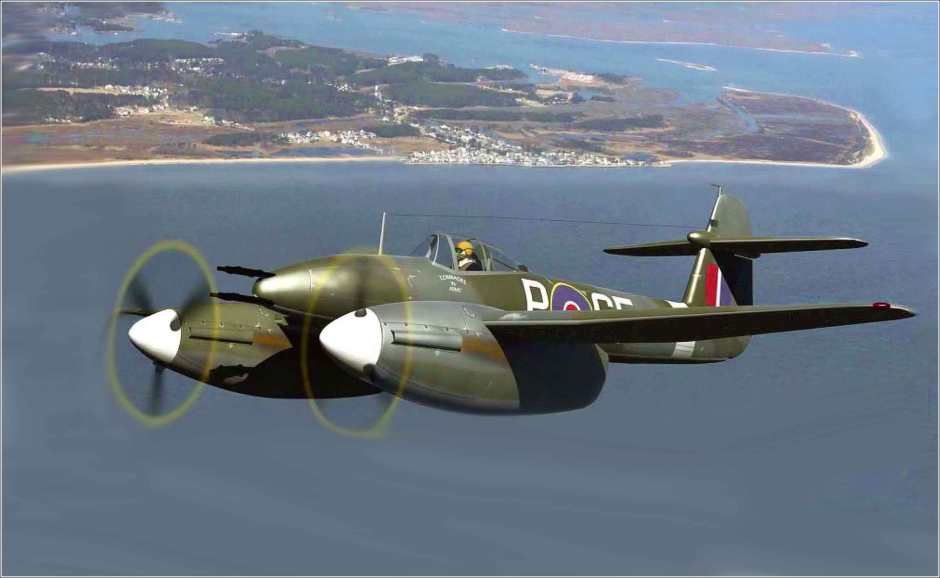
P7102 P-SF ‘Comrades in Arms’, a presentation Aircraft, paid for by Sir Samuel Ellis of Cambridge, New Zealand
Westland Whirlwind
The Contributions (Blow-ins) were collected by an appointed “Airpocket” in every Town & Village and passed on to the Cashier (Receiver of Windfalls) who then took them to the Bank where the Treasurer (Keeper of the Windbag) saw that the Funds were sent to the Ministry of Aircraft Production – by Airmail of course. The Fellowship spread from Argentina very rapidly to the neighbouring Countries of Uruguay, Chile, Peru, Bolivia & Brazil where it was taken up most enthusiastically resulting in the creation of Squadron 193, the “Brazilian Squadron”. It spread further to Colombia, Venezuela, Ecuador, Mexico, Curaçao, Aruba, Jamaica, Cuba, Nicaragua, Falkland Islands, Guatemala, El Salvador and even to Hong Kong. Contributions generally went towards Aircraft Production.
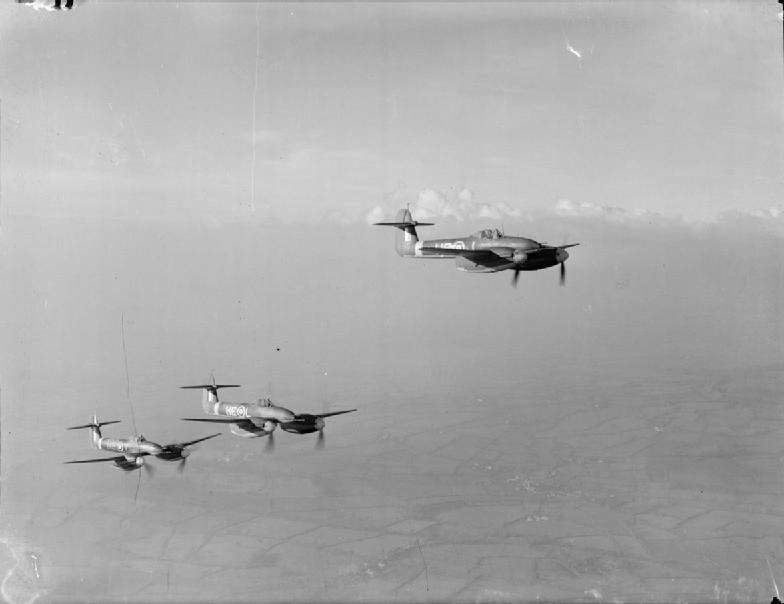
Four Squadrons of Aircraft were donated 263 Squadron in April 1941, followed by 137 Squadron in 1942, then 193 Squadron in 1943 and lastly 692 Squadron in 1944.
On November 10th 1944 another Bellows Squadron (692) was formally presented to Air Chief Marshal Sir Arthur Harris at RAF Graveley from Funds raised by the Fellowship Worldwide.

Bomber Command’s, Air Chief Marshal Arthur Harris is joined by Air Vice-Marshal Don Bennett (right) at a Ceremony held at Graveley to mark the Squadron’s ties with the Anglo-Argentinian Fellowship of the Bellows.
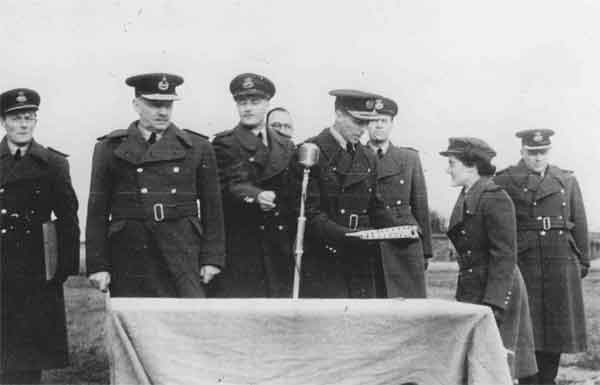
The Ceremonial ‘Bellows‘ Mascot handover to Don Bennett was done on behalf of the Fellowship by the ‘Windlass’, who by this time were in the UK Serving in the RNVR & WAAF.

Hanging from the wall in the office of No 692 Squadron‘s Commanding Officer during the last war was a pair of Bellows. A peculiar ornament to be decorating a CO’s office, one would say, at any time. Around those Bellows hung an interesting story. They were presented to the squadron to mark the occasion of a visit by members of the Fellowship of the Bellows, a movement created in Buenos Aires with the object of raising money for the purchase of Aircraft for the RAF No.692 was adopted by the Fellowship in 1944 shortly after the Squadron came into being. The 692 Squadron was formed at Graveley, Huntingdonshire, on 1st January 1944. It was equipped with Mosquito Light bombers and became part of the Force of Fast, High-flying Night Raiders – the Light Night Striking Force of No 8 (PFF) Group. The Light Night Striking Force made a name for itself with its regular journeys to Berlin, hitting the German Capital again and again with 4,000lb. “Cookie” Bombs.

Squadron 692 consisted of 31 Mosquito bombers. The handover was done on behalf of the Fellowship by the High Wind and the Windlass, who by this time were in UK serving in the RNVR & WAAF. When the Fellowship of the Bellows was wound up the total amount collected was Pesos 9,542,734.58 (approx. £600,000) of which Argentina was responsible for Pesos 3,140,000.00 (approx. £200,000). This had been sent to the Ministry of Aircraft Production through the British Patriotic Fund. In addition, Pesos 747,228.60 (approx. £50,000) was sent to the RAF Benevolent Fund, and Pesos 16,298 (approx. £1,000) was used to assist Argentine Scholars abroad.
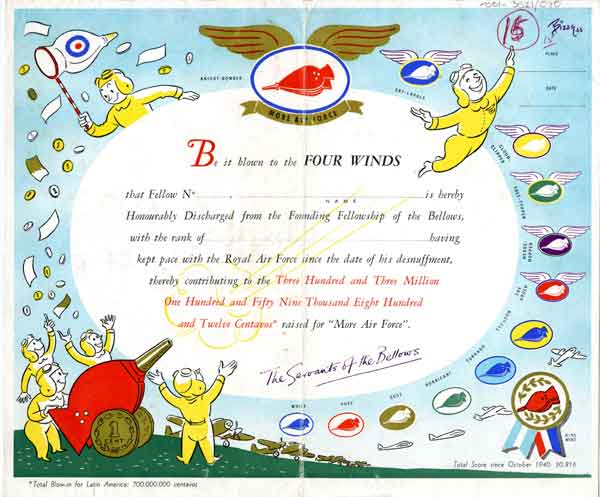
The total number of Servants was estimated to be over 200,000 including 56,000 in Argentina and 35,000 in Uruguay. On 7th September 1945, the ‘Fellowships of the Bellows’ blew themselves out at a mammoth ‘Deflation Party’ at the Plaza Hotel, Buenos Aires attended by more than 1000 ‘Fellow Bellows’, including specially selected young ladies to represent each of the many Latin American Countries that had raised Funds in this way. Nearly 10 million Pesos (approx. £600,000) had been raised at a time when a Spitfire cost £5,000. The Founders of the Fellowship of the Bellows maintained their Anonymity throughout their lives and eschewed any Publicity.
 However, the identity of the Principals can now (in 2014) formally be made Public. The High Wind was E A (Bill) Rumboll, who was with Ernst Berg & Cia (Advertising Agency) and also worked for British Intelligence in Buenos Aires until he had to flee to Britain when his cover was blown. Then in the latter part of the War, operating out of London, he ran the Escape Routes through Spain to enable British Servicemen to reach Gibraltar and return to Britain. Some RAF Crew, who had escaped capture, returned via this route and saw active service again within 24 hours of reaching Britain. The Whirlwinds (Secretaries) were George Ward & Alan Murray of London & South America Investment Trust. The Receiver of Windfalls (Cashier) was Colin Shearer and the Keeper of the Windbag (Treasurer) was George Collins.
However, the identity of the Principals can now (in 2014) formally be made Public. The High Wind was E A (Bill) Rumboll, who was with Ernst Berg & Cia (Advertising Agency) and also worked for British Intelligence in Buenos Aires until he had to flee to Britain when his cover was blown. Then in the latter part of the War, operating out of London, he ran the Escape Routes through Spain to enable British Servicemen to reach Gibraltar and return to Britain. Some RAF Crew, who had escaped capture, returned via this route and saw active service again within 24 hours of reaching Britain. The Whirlwinds (Secretaries) were George Ward & Alan Murray of London & South America Investment Trust. The Receiver of Windfalls (Cashier) was Colin Shearer and the Keeper of the Windbag (Treasurer) was George Collins.
EA (Bill) Rumboll in his British Naval Uniform (Inset)
The Library of Royal Air Force Museum, Hendon contains more than 80 items relating to the Fellowship of the Bellows comprising Letters, Membership Documents & Photographs. Copies of much original material (including a Montage of Badges) was given to the Library of the Royal Air Force Museum, Hendon in January 1999, in the name of the Servants of the Bellows. Copies are kept by J W E Rumboll (2nd son of E A (Bill) Rumboll (1910-1978), the High Wind), who made the decision that the Identity of the Servants of the Bellows should be confirmed as above.
